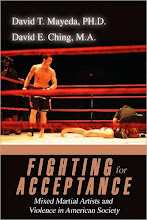 Globalization now follows a rigid pattern in Hawaii due to the island chain's geographic isolation and the degree to which Hawaii has become entrenched in a tourist-dependent economy. Stewart Firth (2000) in his essay, "The Pacific Islands and the Globalization Agenda," relies on a definition of globalization provided by Bairoch and Kozul-Wright:
Globalization now follows a rigid pattern in Hawaii due to the island chain's geographic isolation and the degree to which Hawaii has become entrenched in a tourist-dependent economy. Stewart Firth (2000) in his essay, "The Pacific Islands and the Globalization Agenda," relies on a definition of globalization provided by Bairoch and Kozul-Wright:a process in which the production and financial structures of countries are becoming interlinked by an increasing number of cross-border transactions to create an international division of labor in which national wealth comes, increasingly, to depend on economic agents in other countries...
Firth then adds:
Globalization is characterized by huge increases in flows of capital across the world, rapid growth in trade, the emergence of new kinds of trade in services, a technological revolution in communications that makes the globe itself the site of operations for major companies, and the growing influence almost everywhere of market forces.
There is much more to Hawaii's state in the global economy than that driven by global market forces. In addition, there is a long history of cultural appropriation and exploitation. As Haunani Kay-Trask argues in her outstanding essay, "Lovely Hula Hands: Corporate Tourism and the Prostitution of Hawaiian Culture," (see From A Native Daughter) the relationship between the international tourist industry and those who work in it is analogous to that between a pimp and prostitute:
The pimp is the conduit of exchange, managing the commodity that is the prostitute while acting as the guard at the entry and exit gates, making sure the prostitute behaves as a a prostitute by fulfilling her sexual-economic functions. The victims participate in their victimization with enormous ranges of feeling, including resistance and complicity, but the force and continuity of the institution are shaped by men.
Focusing specifically on the tourist industry's commodification of the hula, Trask adds:
The first requirement is the transformation of the product, or the cultural attribute, much as a woman must be transformed to look like a prostitute, i.e., someone who is complicitious in her own commodification. Thus, hula dancers wear clown-like make-up, don costumes from a mix of Polynesian cultures, and behave in a manner that is smutty and salacious rather than powerfully erotic. The distance between the smutty and the erotic is precisely the distance between Western culture and Hawaiian culture. In the hotel version of the hula, the sacredness of the dance has completely evaporated while the athleticism and sexual expression have been packaged like ornaments. The purpose is entertainment for profit rather than a joyful and truly Hawaiian celebration of human and divine nature.
Trask, however, does not chastise those indigenous persons who partake in their own exploitation, noting that tourism has essentially become "the only game in town" by which many Hawaiians can make a decent living. And as Firth notes, the general populace has built up an ideology that supports globalization, or in the case of Hawaii, the tourist industry.
When people challenge tourism, they are challenging Hawaii's central revenue producing mechanism. As such, they are said to be challenging business investment, public school improvement, and a higher standard of living. Tourism in short, runs the show; the global market runs Hawaii, not Native Hawaiians.
And it's been external investment that has driven up the cost of living in Hawaii for local and indigenous residents. John Fischer comments on how this has caused the homeless population (largely indigenous Hawaiians) to skyrocket:
The median cost of a single family home on Oahu, as of the third quarter 2006, is $635,000. (Honolulu Board of REALTORS®, October 18, 2006) The median cost of a condominium is $315,000. Even on Oahu's less well-to-do Leeward Coast, the median cost of a single family home is $365,000. and a condominium $ 179,000. None of this is to infer that many such residences are even available for sale.
However, while Fischer criticizes foreign "investment" that ultimately supports outside capitalists (and not indigenous peoples), he goes on to state tourism is the answer that will help local residents and the indigenous population, thereby buying into the globalization ideology, or at least the tourist-driven ideology:
The real root of the problem are people like you and me - mainlanders who either move to the islands or buy property in the islands driving up the cost of housing each year and driving more and more locals into economic hardship. Many, if not most, of these mainlanders are independently rich or retired rich. They are consumers of society, not contributors to society. Most never work in Hawaii. They depend on others to service their needs.
People ask me why I don't move to Hawaii. For me, it's a matter of principal. Hawaii does not need more mainlanders investing in or moving to the islands. Visit Hawaii. Spend your money. Don't move there.
For a humorous, but insightful look into how tourism exploits the native culture, see The Rock's skit from Saturday Night Live (of note, "The Rock," Dwayne Johnson, grew up in Oahu and is half Samoan). It conveys many of the messages expressed by Trask -- that tourism not only prostitutes culture, but that tourists also appropriate it as their own since the Hawaiian culture is built into a service-based economy, which therefore must be generous and welcoming (put on that big smile!), even if it marginalizes native peoples, perpetuates crime, poverty, and homelessness.
(Photo of Oahu homeless via John Fischer)









Hawaii has become a second rate destiny underneath Costa Rica and Thailand... how sad, their economy is going down.
ReplyDelete